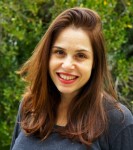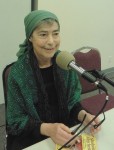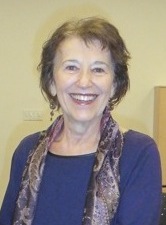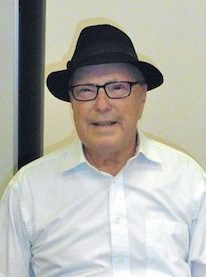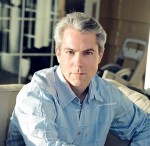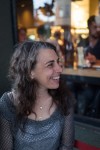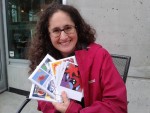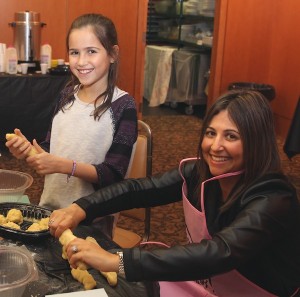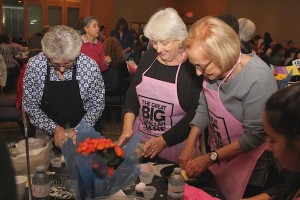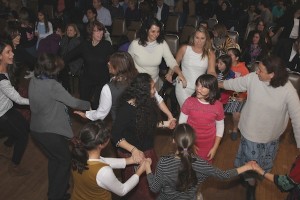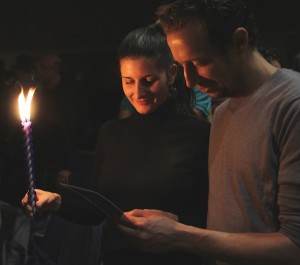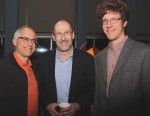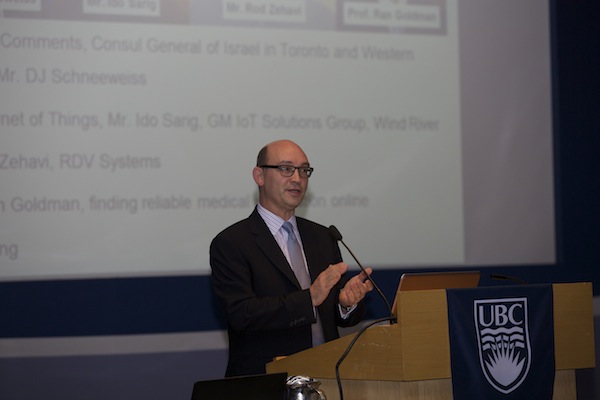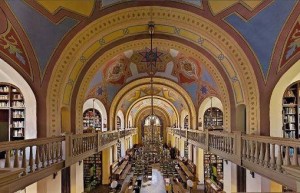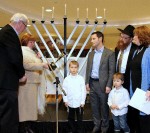Filmmaker Yael Luttwak spoke at Choices Nov. 1. (photo from jewishvancouver.com)
A film that brings Palestinian and Israeli women together in a weight-loss group. Who would have thought that was possible? American-Israeli Yael Luttwak did, and she made it happen. Luttwak, the keynote speaker at Choices, Jewish Federation of Greater Vancouver’s annual women in philanthropy event, held on Nov. 1 at Congregation Beth Israel, captivated the audience with her story.
“The idea came to me at a time when
I was attending Weight Watchers in Tel Aviv,” said Luttwak. “The peace process had broken down and Ariel Sharon had been hospitalized and I had this image of Sharon and [Yasser] Arafat jogging together on the beach and working it all out. It struck me, as I listened to women in my group who were uninhibited in sharing their struggles with health and weight and body image, that there was so much humanity in that room. What if we could capture this humanity and bring together women who otherwise would never have an opportunity to meet?”
She set out to find women who would be willing to participate in this social experiment. She approached Orthodox women, West Bank Muslims, American-born settlers and Bedouins. Fourteen women agreed to get involved. The Jerusalem Cinémathèque in East Jerusalem became the meeting place. Filming took six weeks.
The women metamorphosed during the process, as they started to come to the meetings in nicer clothes and make-up, and they began to share their thoughts (and recipes). “This was the first opportunity for Arab women to meet Jewish women that were not soldiers, and for Israeli women to meet Arabs that did not want to kill them. At the beginning, everyone was nervous, but very polite (unusual for the Middle East) but, within a few hours, they were all talking and sharing stories.”
The women found common ground on many issues that emphasized their similarities. Even when there was political turbulence, violence on the streets of Jerusalem and curfews, the Arab women would cross the checkpoints to attend the meetings. When Luttwak asked what it was about the group that kept them coming, they answered that it was their only opportunity for hope. And so, the 2007 documentary A Slim Peace came to be. It premièred at the Tribeca Film Festival in New York and screened in the United States on Sundance Channel.
While promoting the film, Luttwak was approached by English philanthropist Dame Hilary Blume, who offered to seed fund more women’s groups. She told Luttwak, “Don’t waste your talent on films. You have hit on something. You are building bridges. This is your destiny.” As a result, the nonprofit Slim Peace developed and, over the past eight years, it has opened 33 groups in six cities and two countries. Luttwak said, “It’s a train I cannot stop.” She has also been able to keep making films about contemporary issues. Her final messages – we all have to do our part for tikkun olam (repair of the world) and to never give up hope.
Prior to Luttwak’s talk, Ricki Thal addressed the audience: “My name is Esther Zuckerman Kaufman and I was born in Warsaw, Poland, on Oct. 11, 1920. I was one of the Jews on Schindler’s List.” Everyone’s attention caught, Thal then told the story of her grandmother and grandfather, Leon, both saved by Oskar Schindler. They never spoke about their wartime experiences and the family had no idea that they were Schindler Jews until they all went to see Steven Spielberg’s movie. That moment changed Thal’s life. It led her to explore her family’s history, to participate in March of the Living on two occasions, as a student and as a chaperone, and to become involved in the Jewish community. Kaufman died in 1999 but not before she appeared in New York on The Phil Donahue Show to tell her story to television audiences. Thal finished almost as she began: “My name is Ricki Thal and I was born in Vancouver in 1979 and I am proud to be the granddaughter of Esther and Leon Kaufman.”
CBC television personality Belle Puri emceed the night, co-chair Debbie Jeroff gave opening remarks and Stephen Gaerber brought greetings from Federation. Two video presentations, a raffle and a meal catered by Susy Siegel completed the night, and then 500 Jewish women went out into the rain inspired, full of good food and hope.
To donate to Federation’s annual campaign, visit jewishvancouver.com.
Tova Kornfeld is a Vancouver freelance writer and lawyer.

